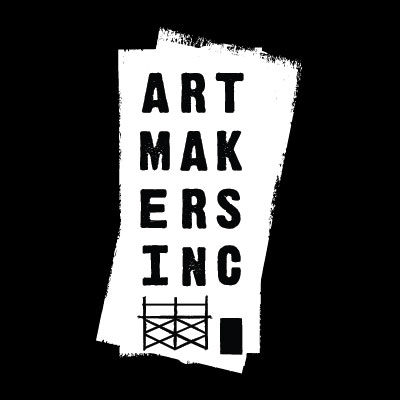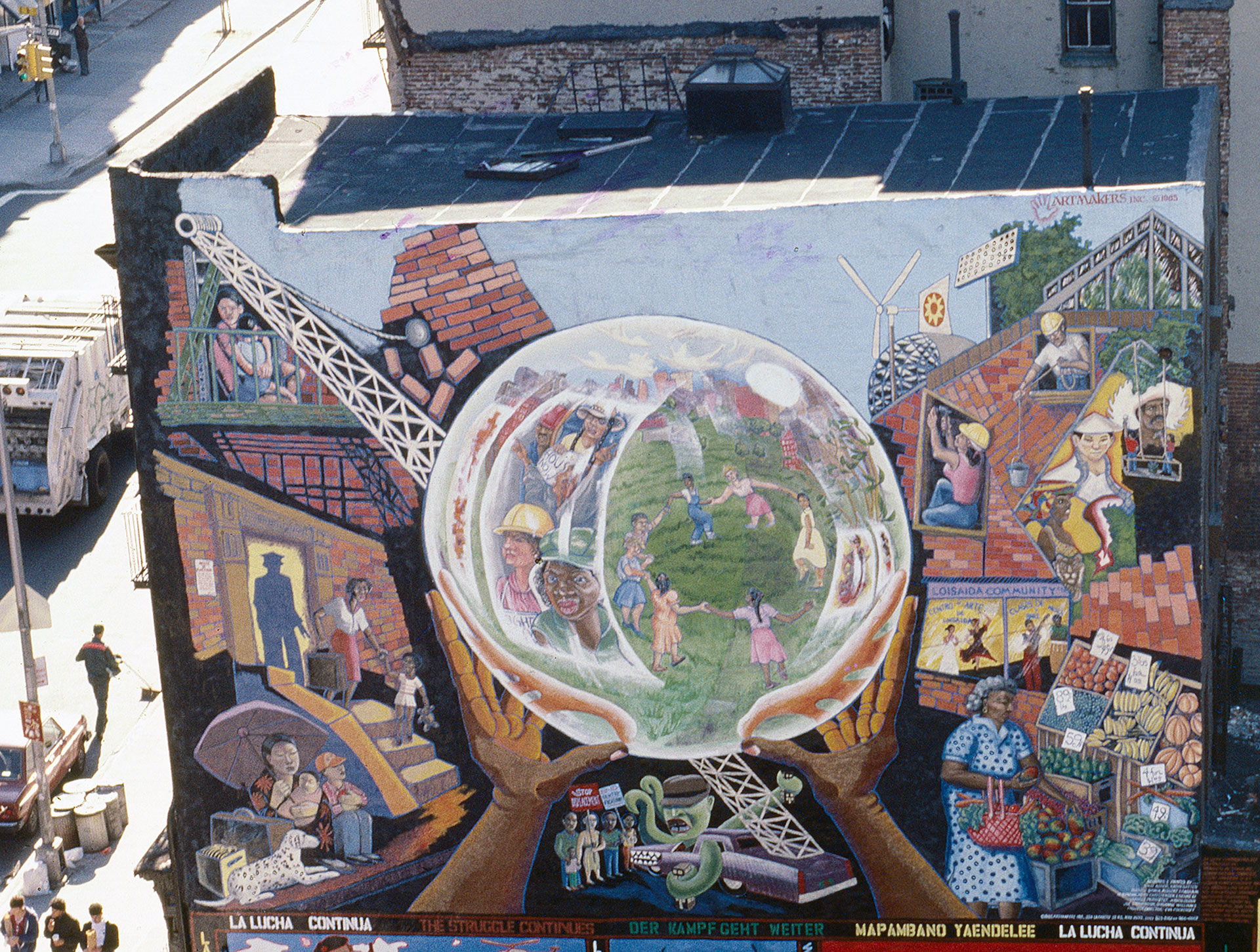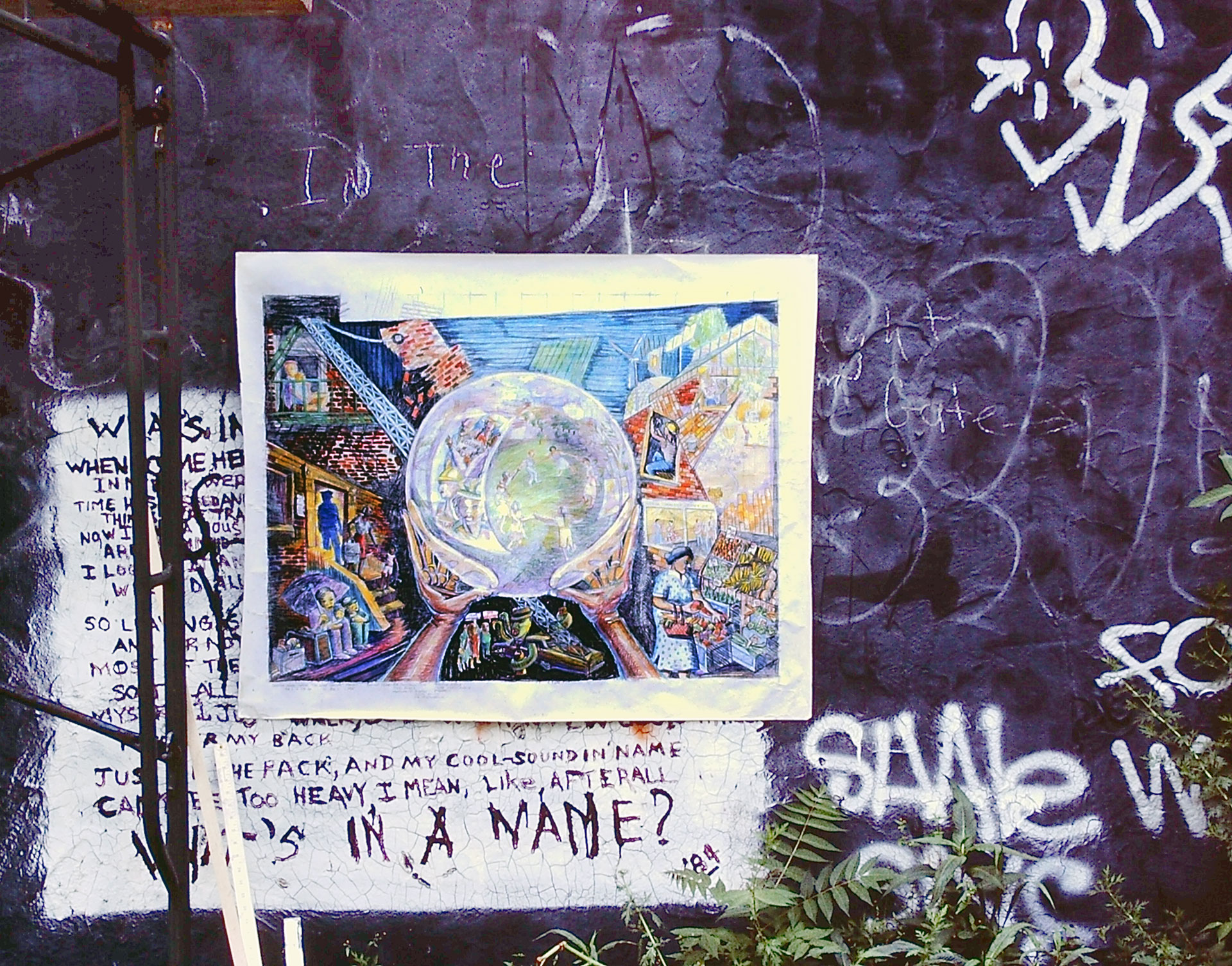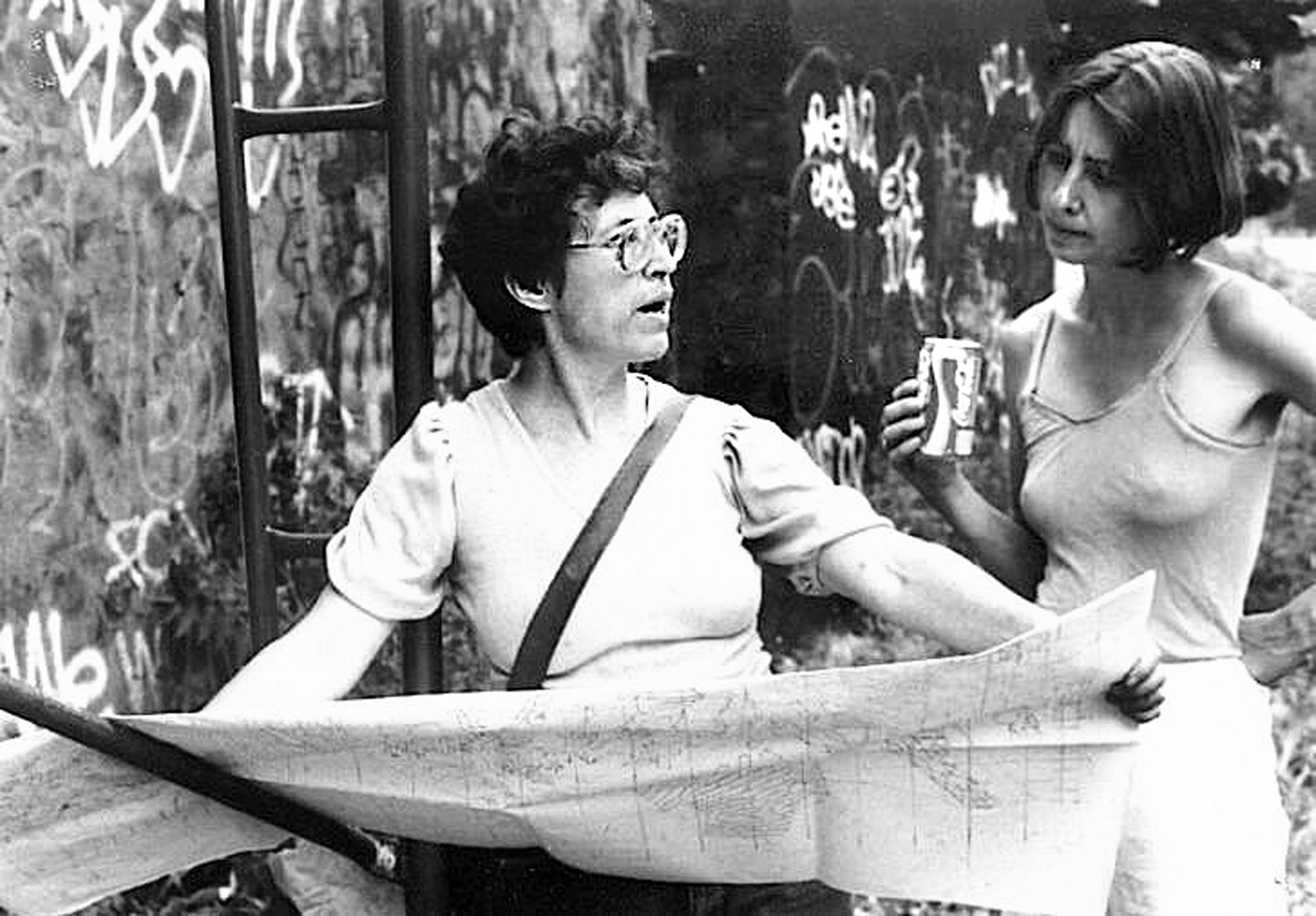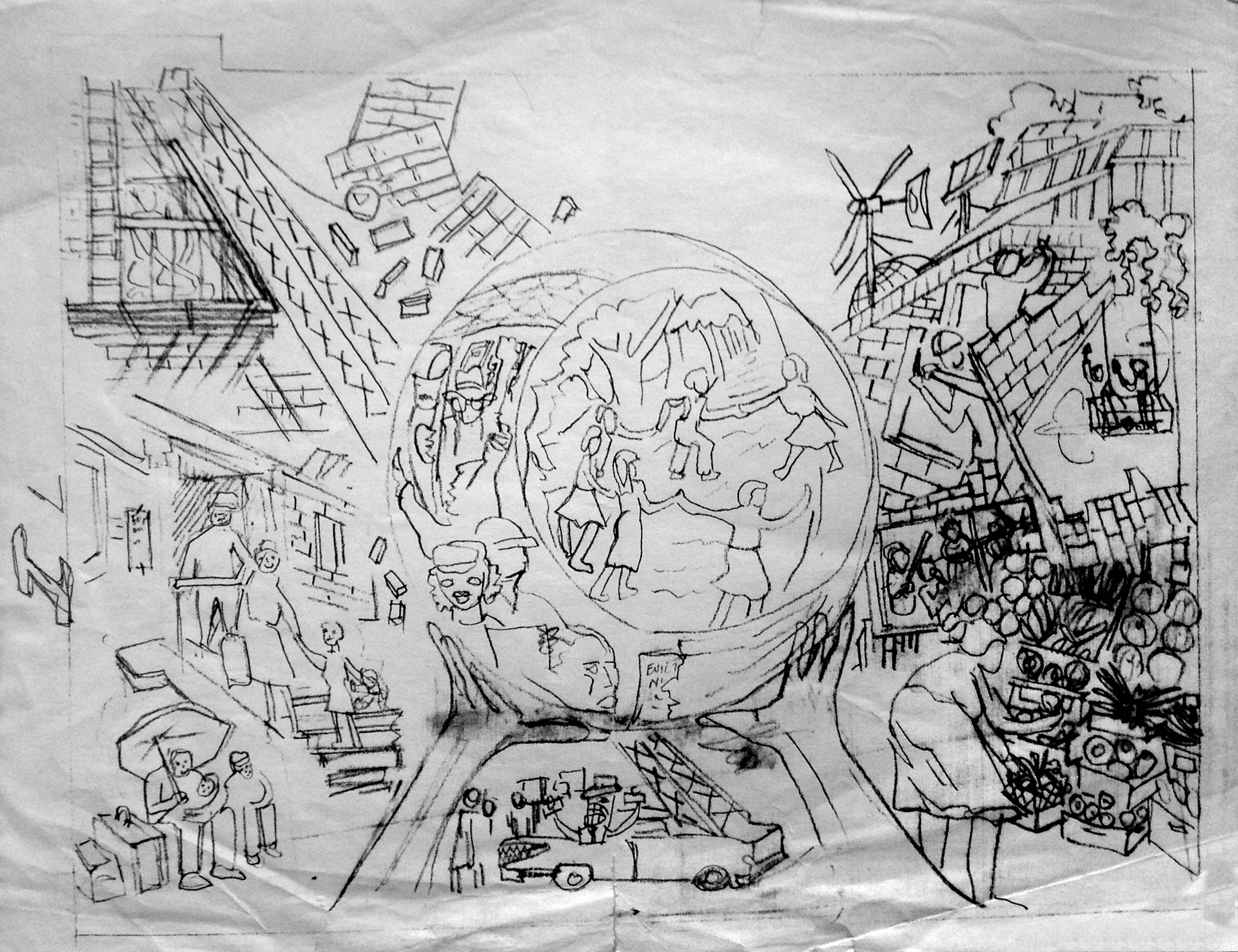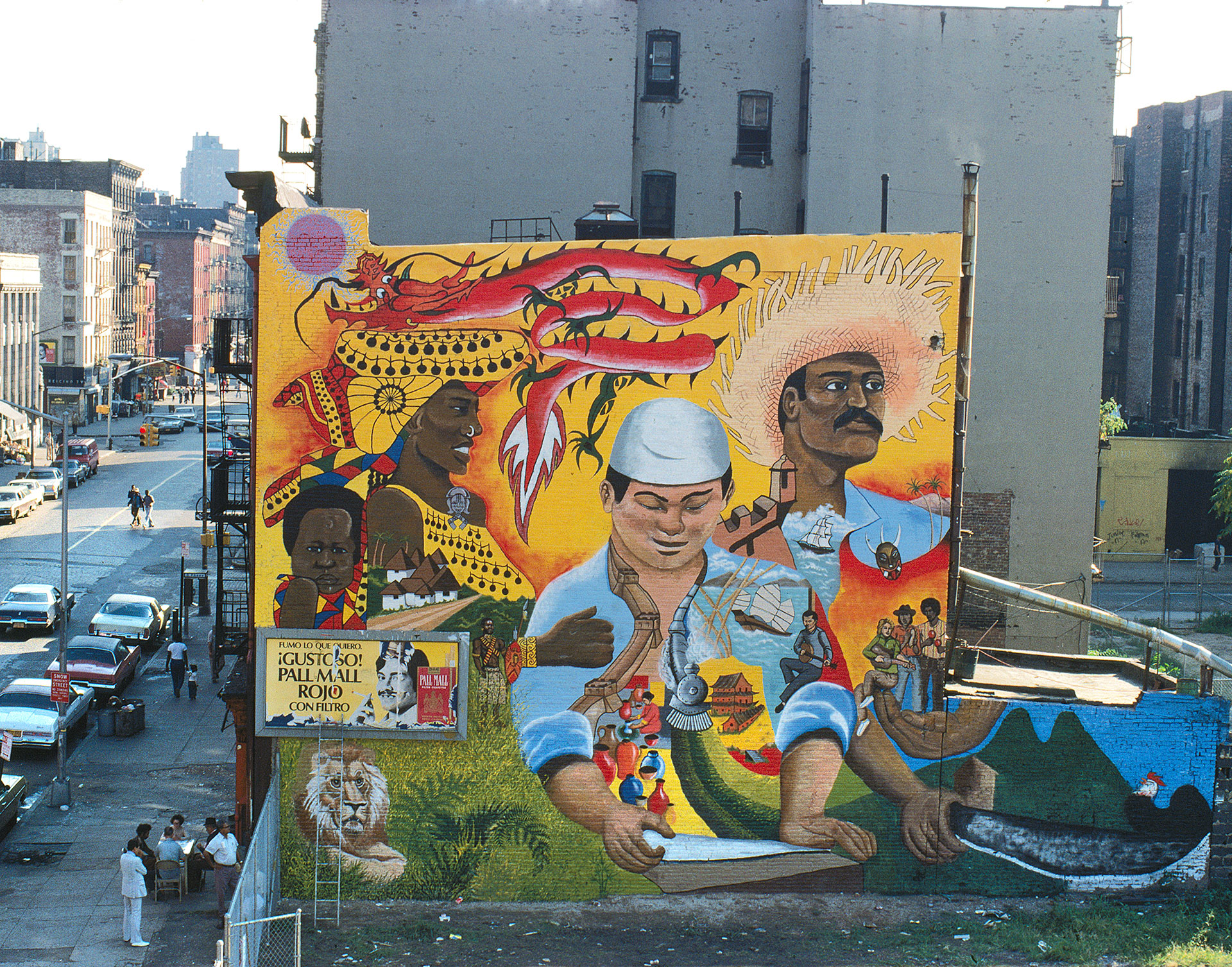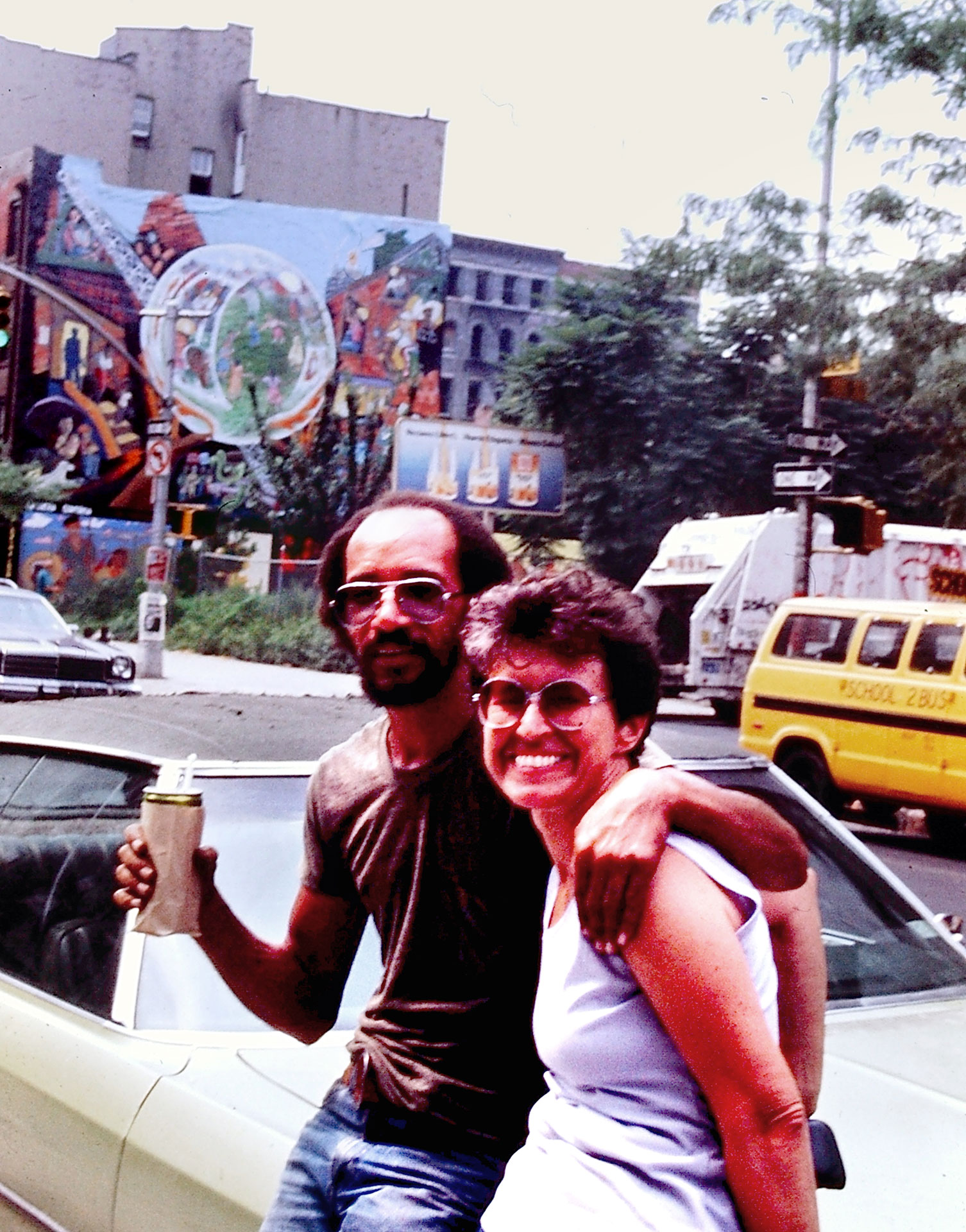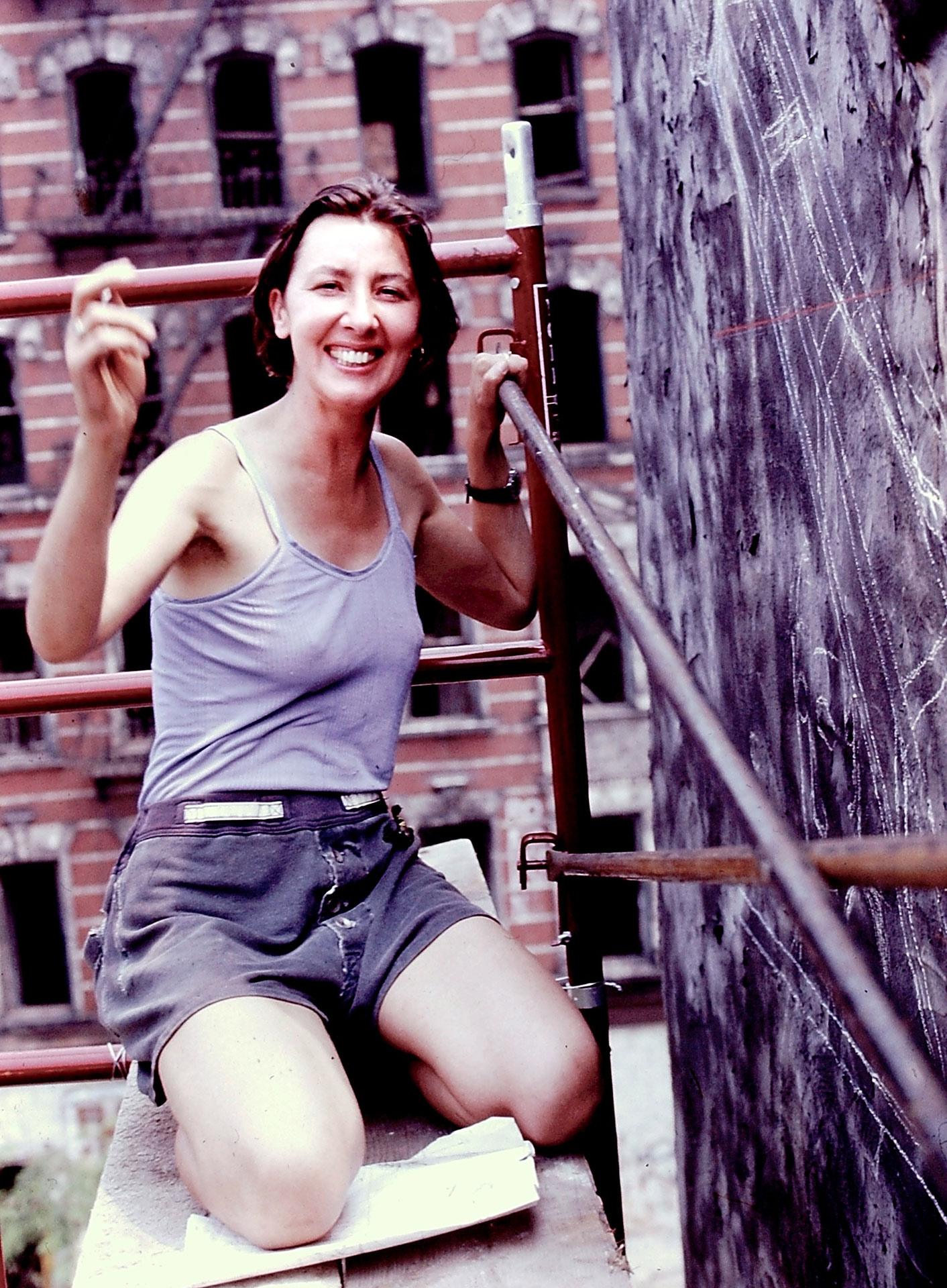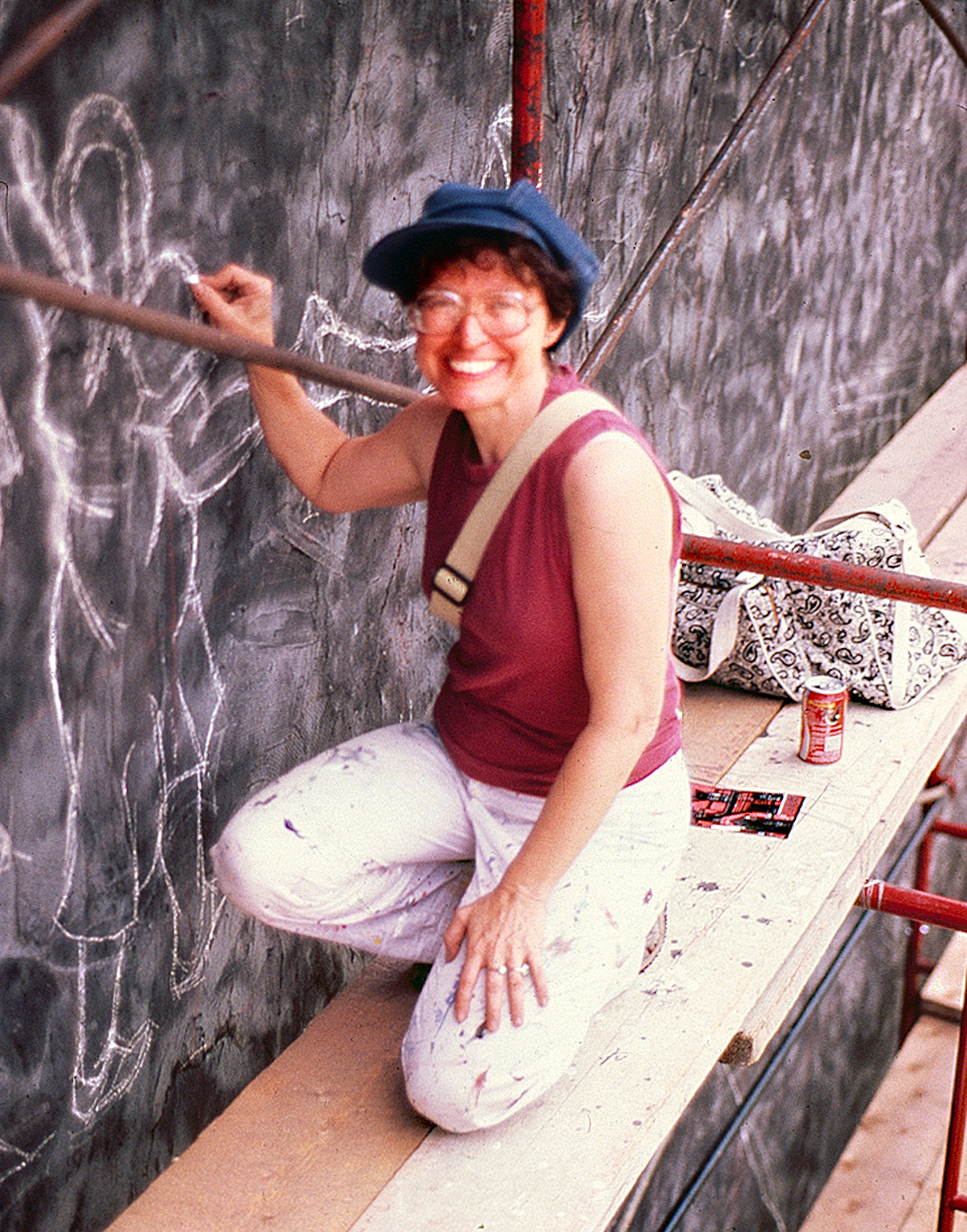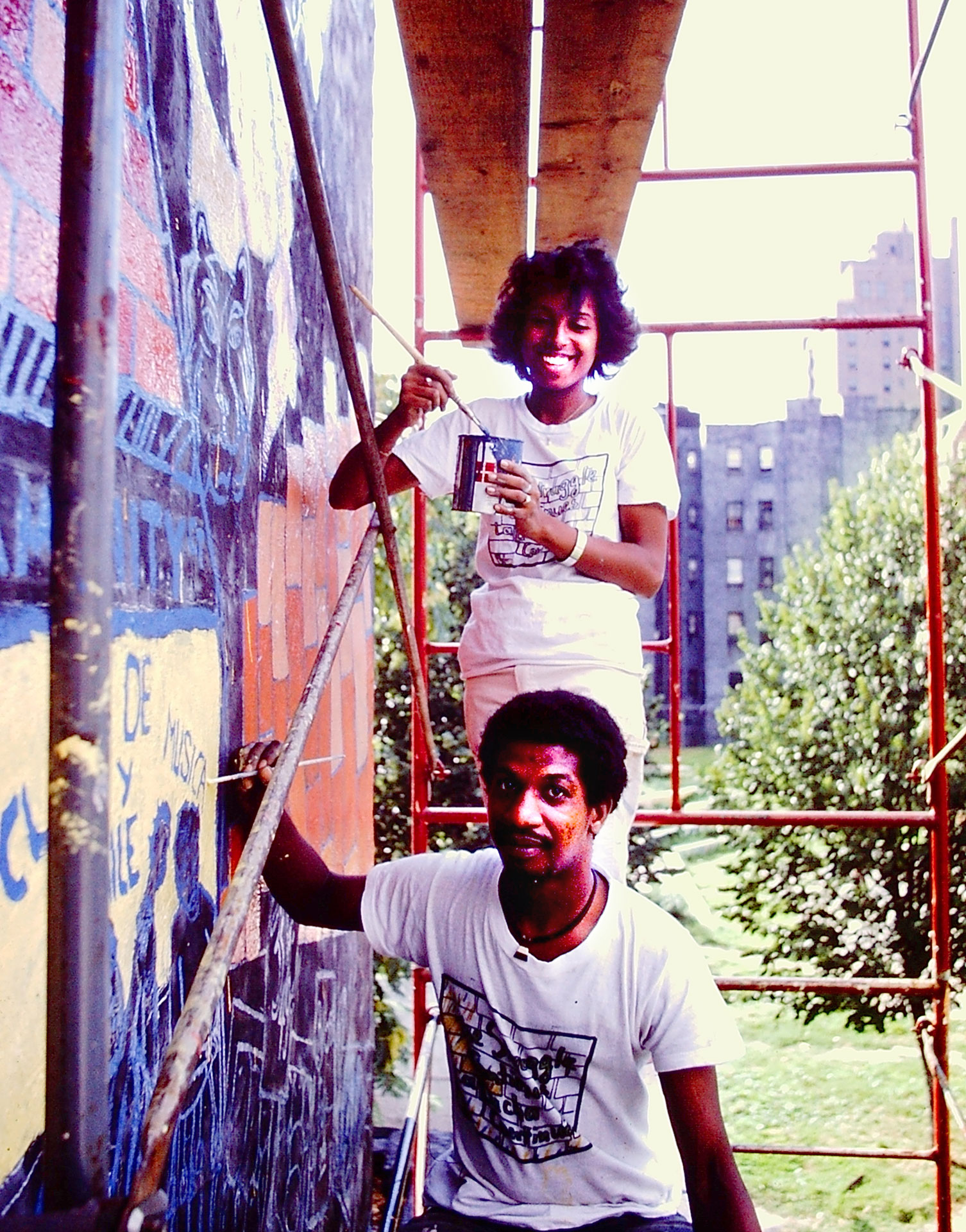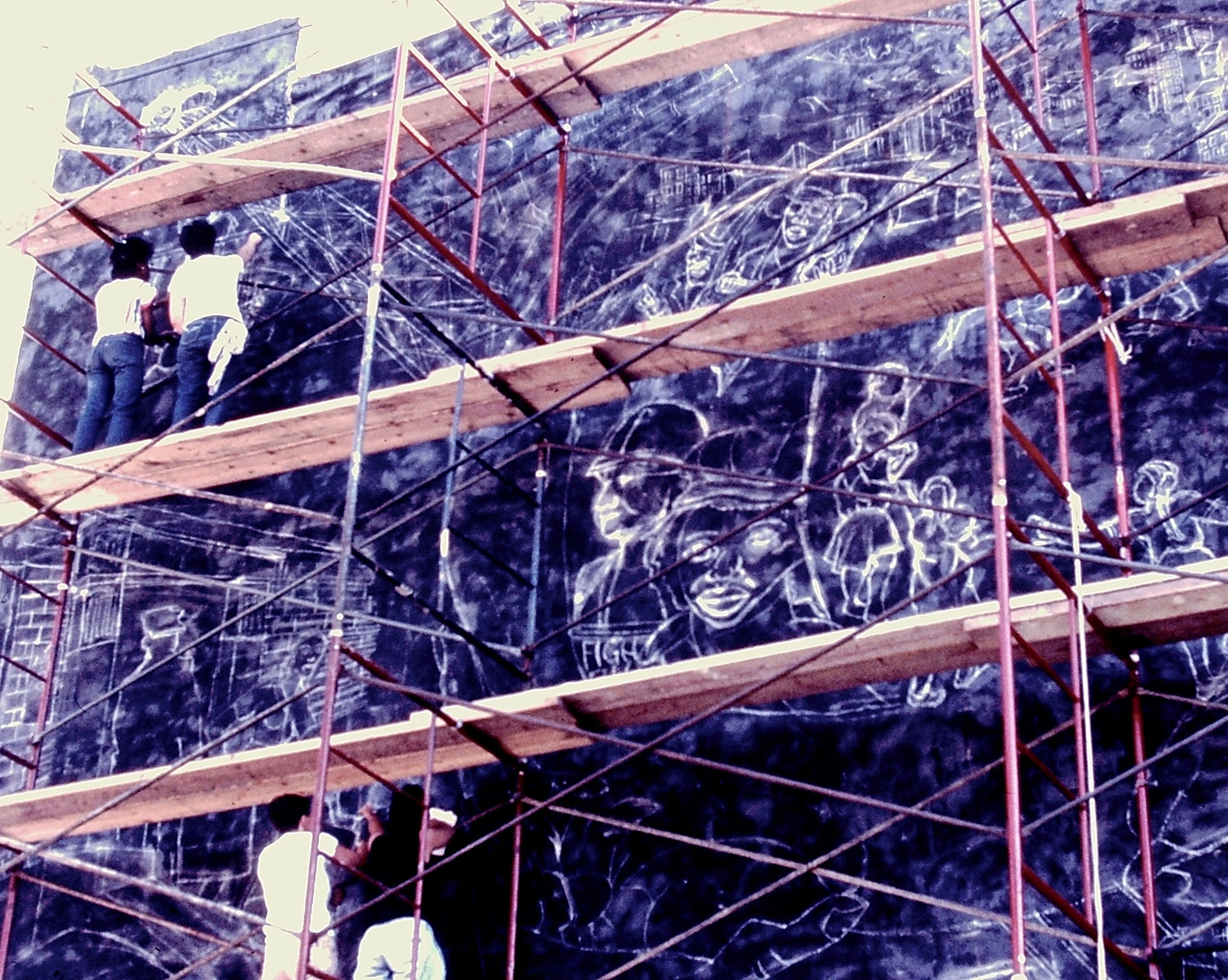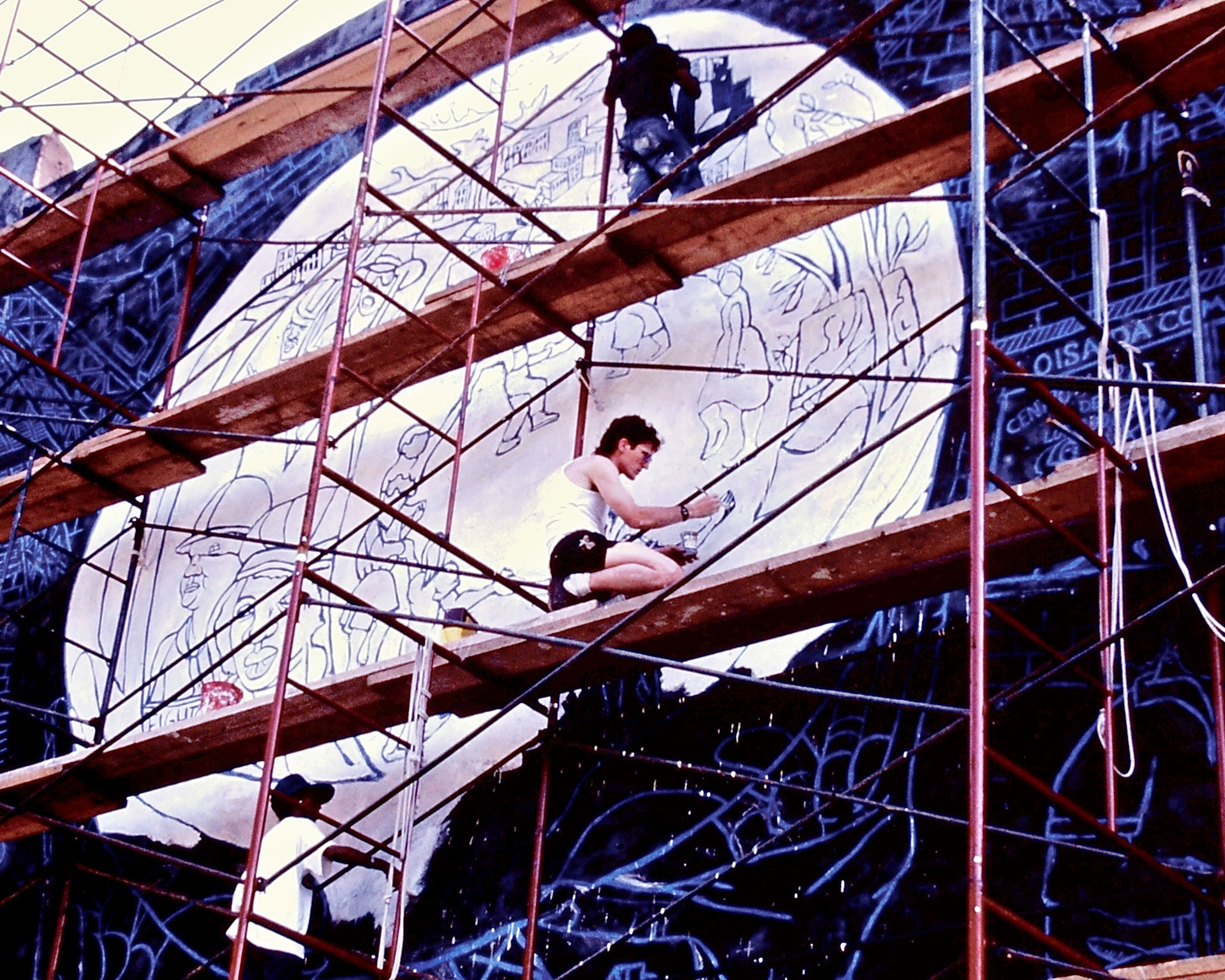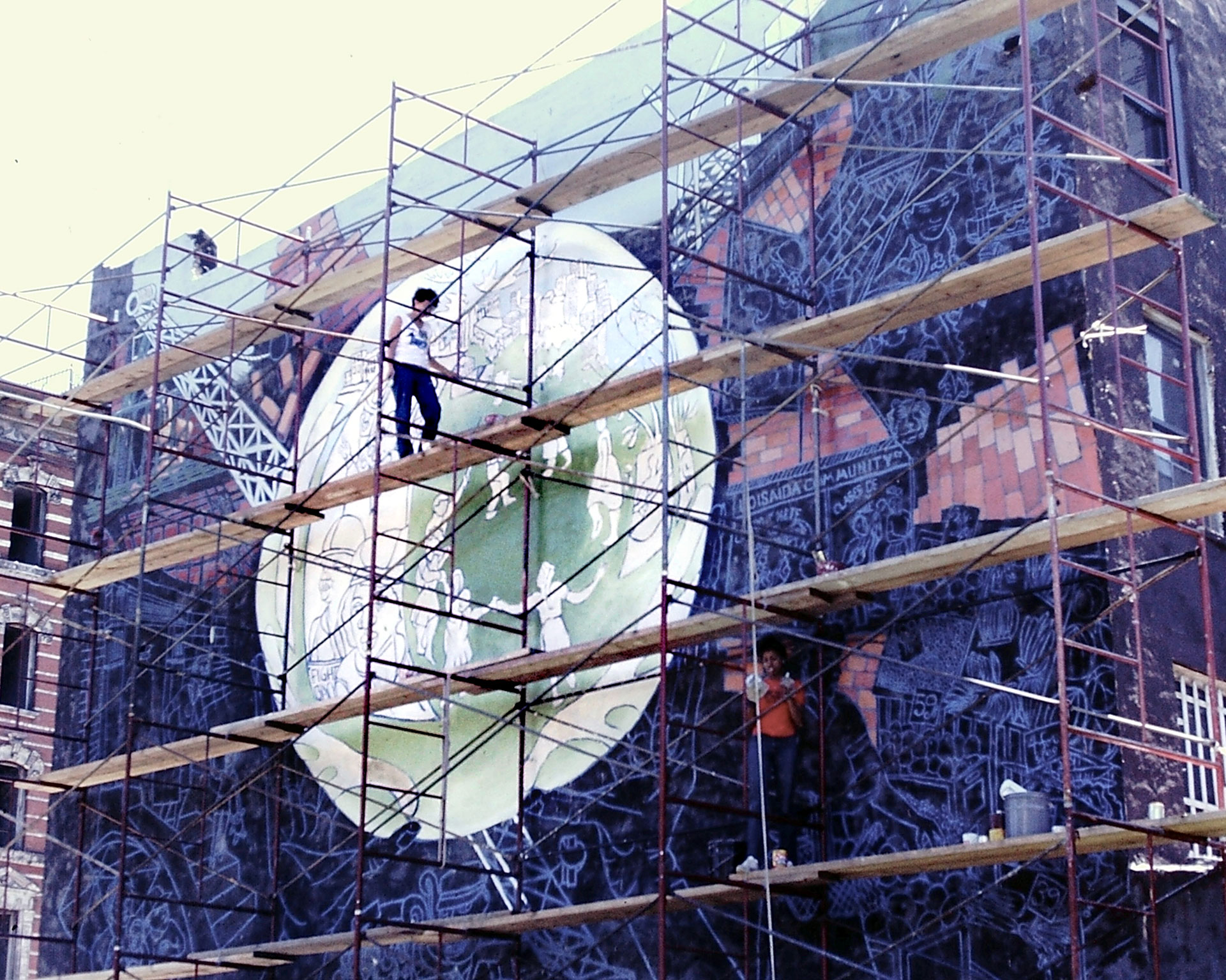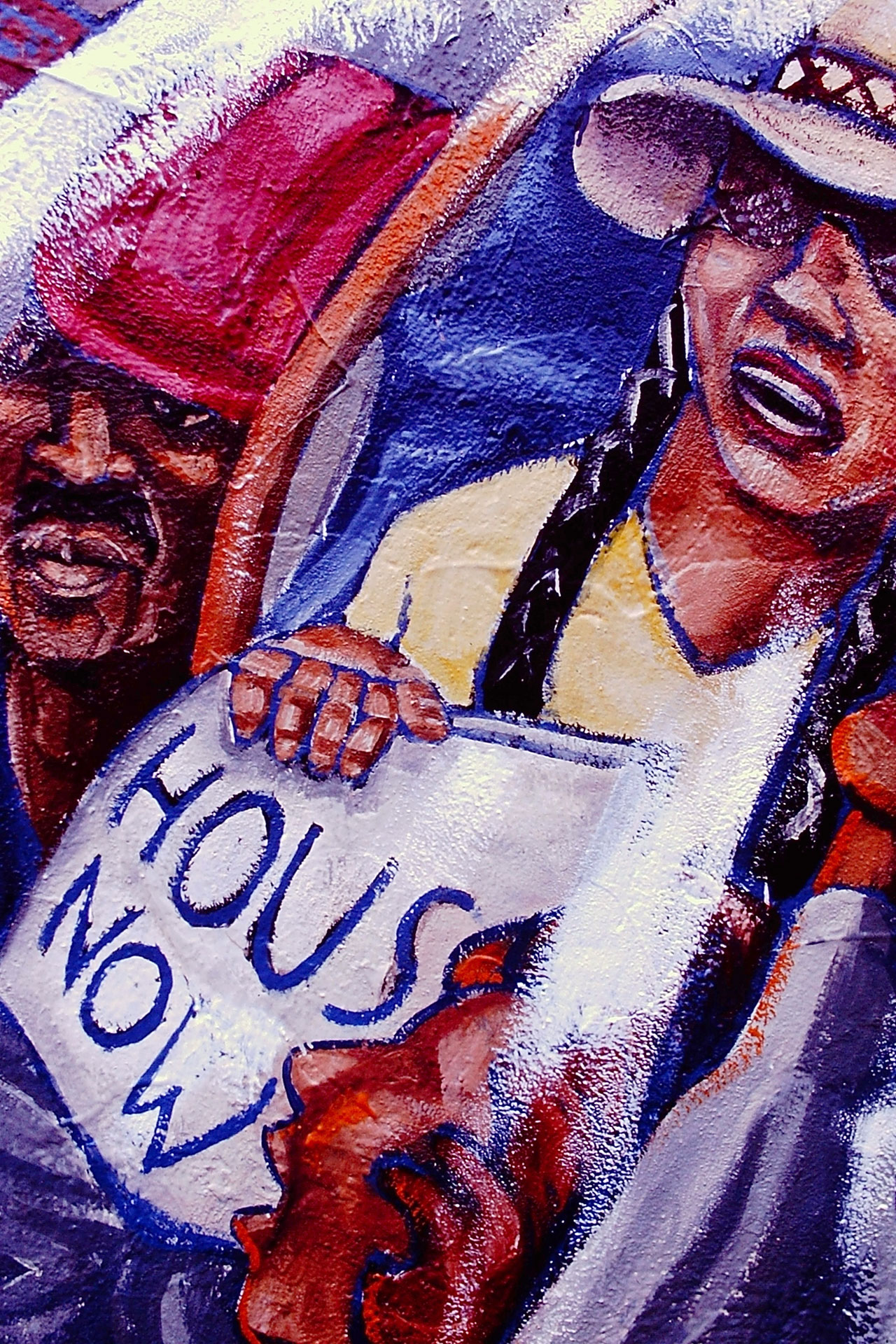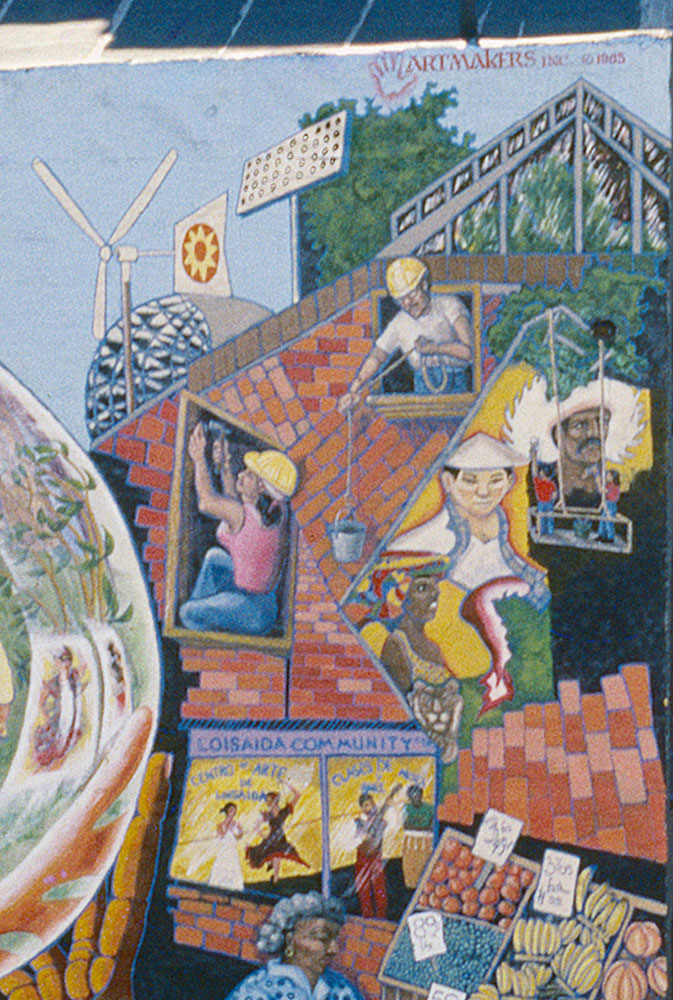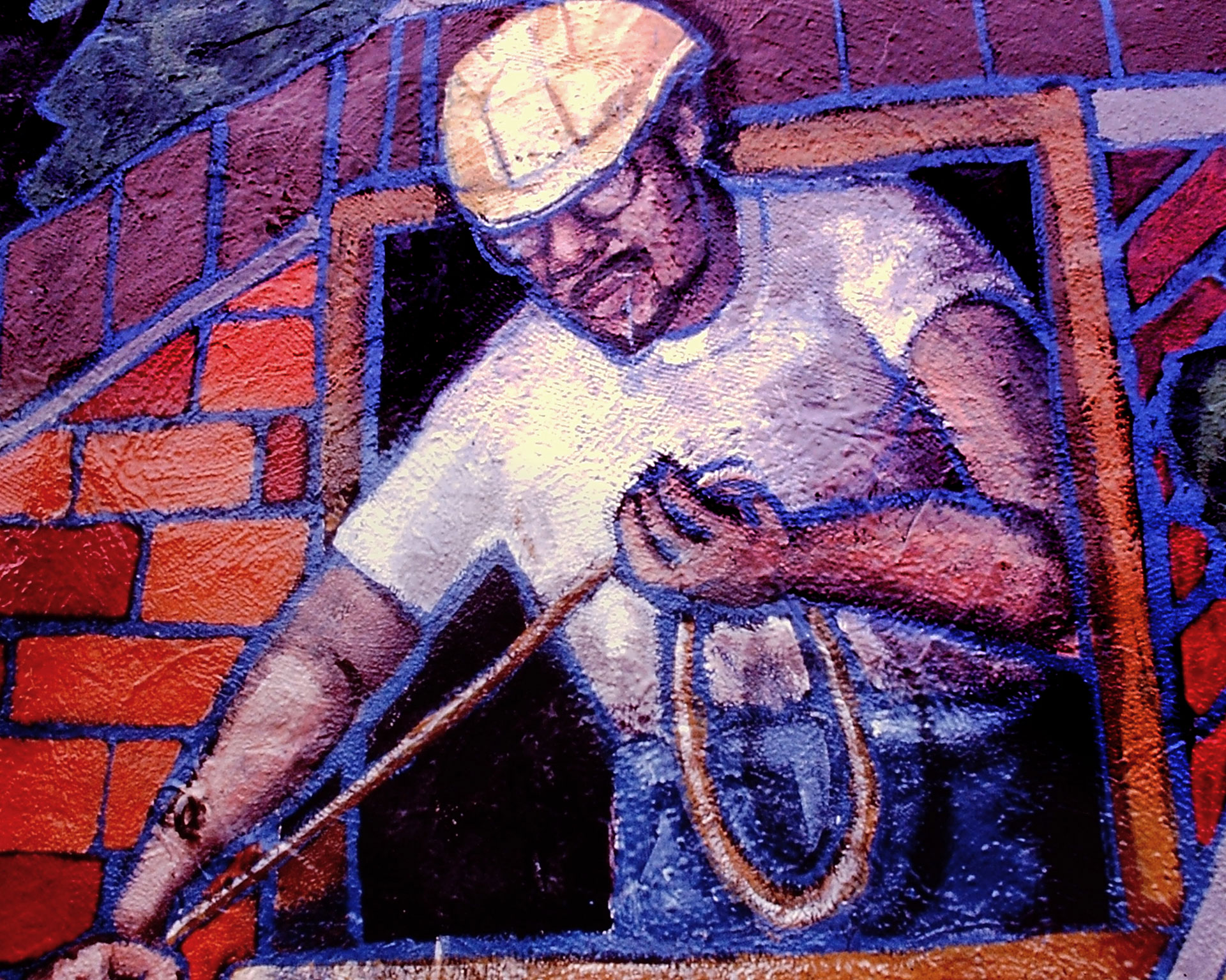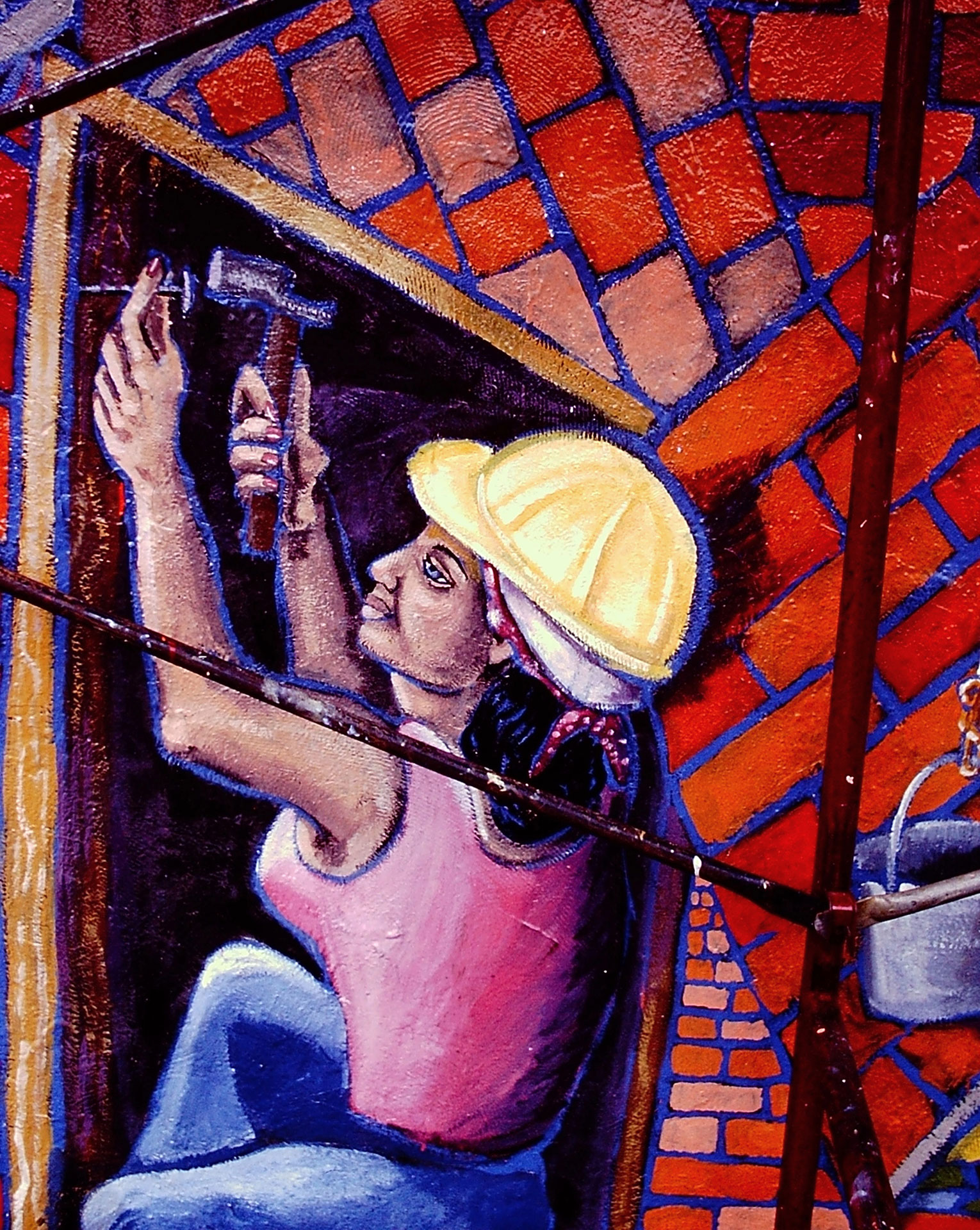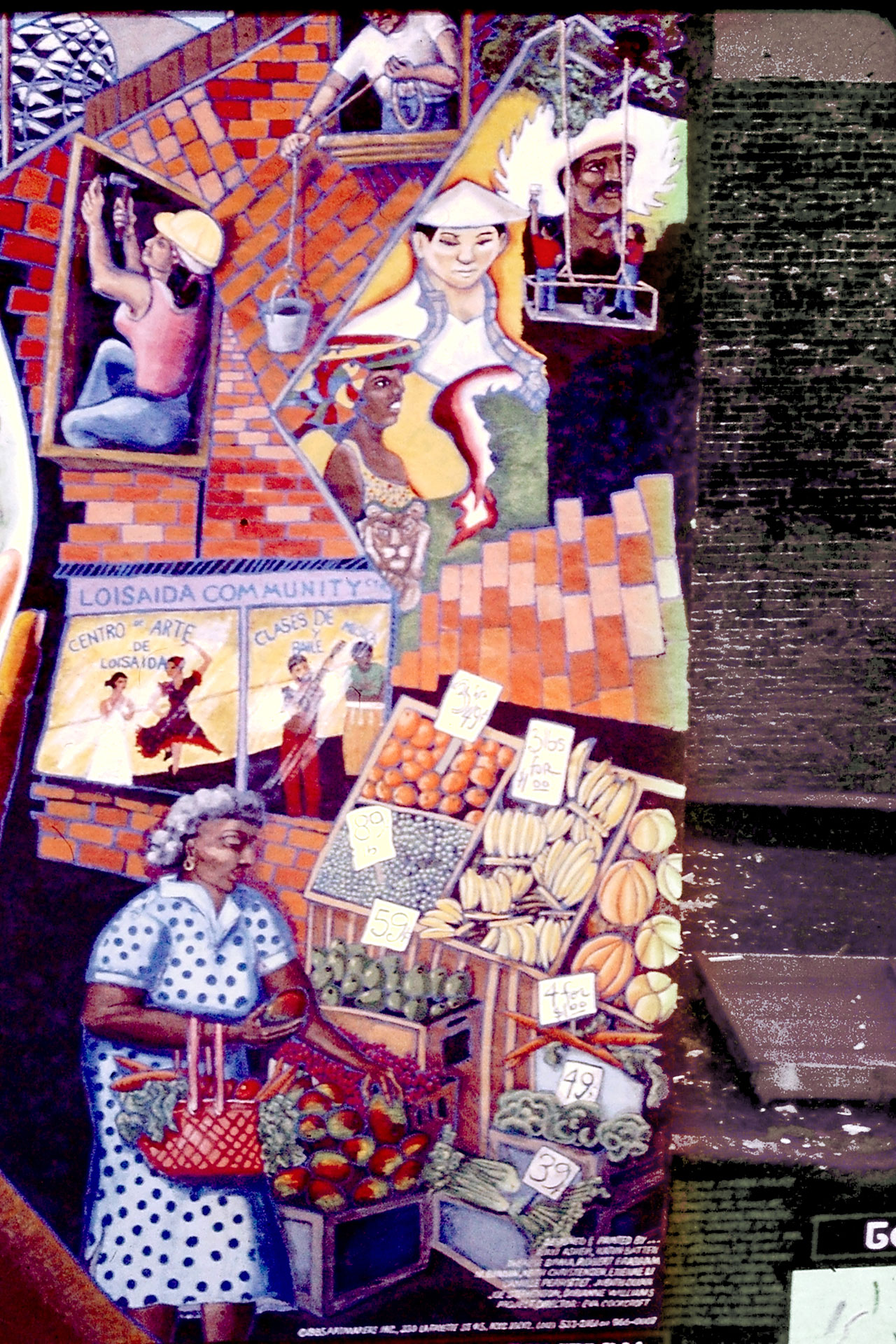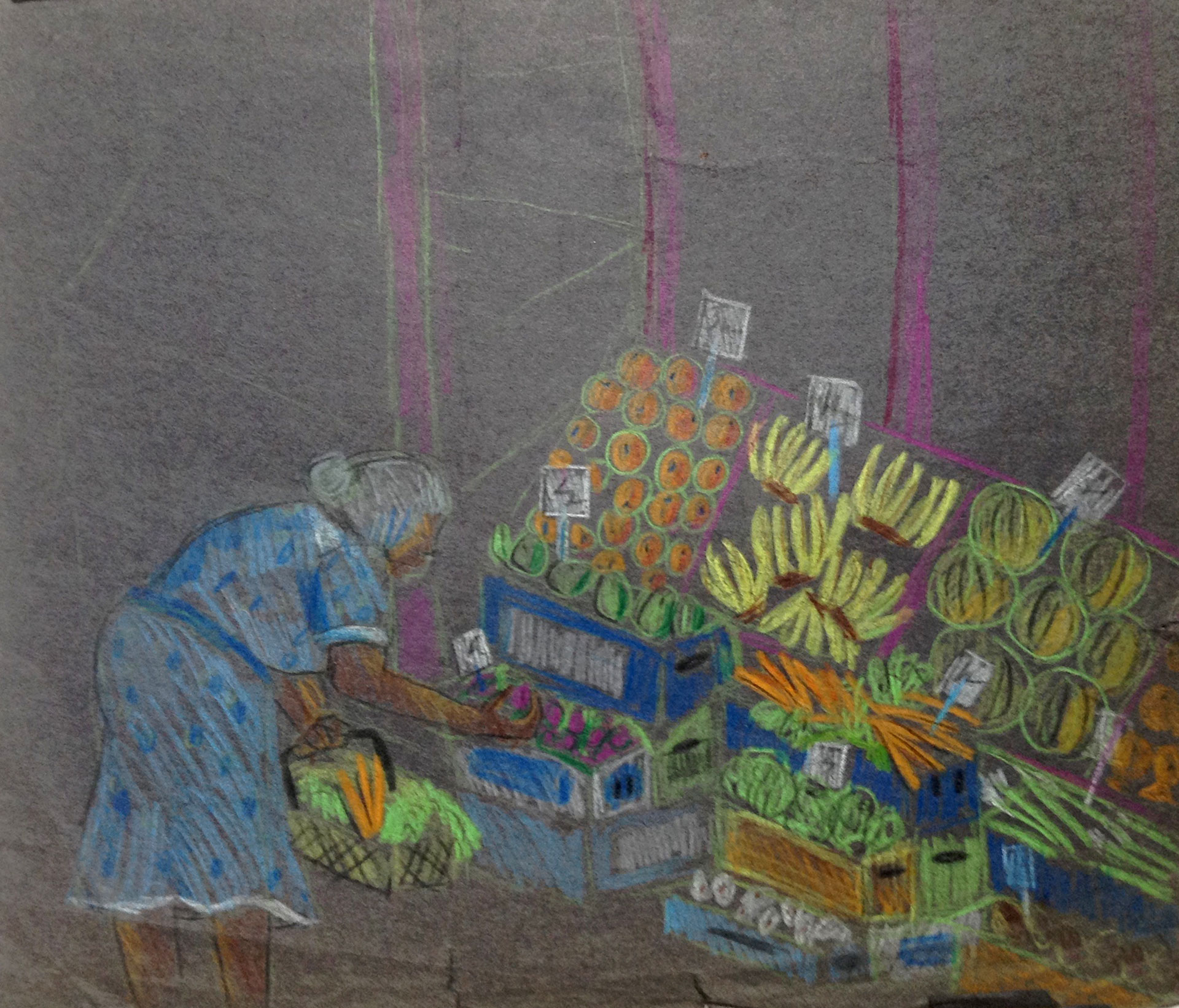1. LA LUCHA CONTINUA THE STRUGGLE CONTINUES
ARTMAKERS COLLECTIVE: Eva Cockcroft (project director), Rikki Asher, Karin Batten, Thérèse Bimka, Robert Brabham, Marguerite Bunyan, Keith Christensen, Etienne Li, Camille Perrottet, Judith Quinn, A.G. Joe Stephenson, Dorianne Williams
1985, 30’ x 41’8”
Above: La Lucha Continua The Struggle Continues collective mural. Below: individual murals by Karin Batten, Keith Christensen, Cliff Joseph, Camille Perrottet and Maria Dominguez
Photo © Estate of Eva Cockcroft
Addressing the theme of gentrification, this collective mural overlooking La Plaza Cultural gives its name La Lucha Continua The Struggle Continues to the entire series of 26 murals. Negative, critical images of life all too real in Loisaida dominate the mural’s left side: a homeless family, an eviction, a wrecking ball destroying a building whose residents have fled to the fire escape.
Positive, affirming images fill the right side: a windmill and solar-paneled rooftop, sweat equity workers undertaking building renovations, a community cultural center, and a local market offering fresh, fairly priced fruits and vegetables. In the center, a large crystal ball holds hopeful images for the future: the promise of “housing now,” female construction workers, and young children playing in a lush community garden, which indeed La Plaza has become.
The faces of the female workers in the crystal ball are referenced in the 2002 mural Homage to Eva: La Lucha Continua, celebrating the life of Artmakers founder Eva Cockcroft who died in 1999. It is located on East 3rd Street at Avenue B.
The past and the future can be found in two vignettes. The La Plaza Cultural Mural (1977) by Alfredo “Freddy” Hernandez preceded La Lucha Continua on this wall. In La Lucha’s upper right corner, two muralists work on a rig painting the faces of the African woman and Chinese and Puerto Rican men originally portrayed in Freddy’s mural; they represented recent immigrant groups to the neighborhood.
Alfredo “Freddy” Hernandez, La Plaza Cultural Mural, 1977,
© CITYarts Workshop, Inc.
Vignette honoring Freddy Hernandez‘s La Plaza Cultural Mural. Note the muralists working on a rig.
Photo © Camille Perrottet
Joe recalls that “Freddy’s mural was destroyed in 1981 when the landlord waterproofed the wall with a coat of black tar. The surface determined our use of oil-based Bulletin sign painter’s colors instead of acrylics, which would have been easier and safer to use. There was also the weirdness of painting on a soft black background, which expanded and contracted with the weather.”
Separating the collective mural from the five small murals below are black bands with the words “The Struggle Continues” painted in various languages. The first translation was in Cyrillic script in honor of the neighborhood’s longtime Ukrainian residents; it’s located above Camille Perrottet’s mural (second from right). These bands appear throughout the park. They do more than frame the smaller panels; they unify and lend coherence to murals characterized by many individual painting styles.
Individual styles are also present in the collective mural. Under the direction of Eva—who created the crystal ball images— the artists suggested ideas and imagery that, collectively, they incorporated into the final design.
Primarily a ceramist whose drawing skills were limited, Thérèse recalls using “collage to explore ideas. My rendering of brick patterning became a unifying feature of the mural—a perfect example of how muralism makes room for everyone’s contributions.” Keith designed and painted the homeless family taking shelter under an umbrella, his “real” dog Casanova keeping them company. He also created the anti-gentrification protestors below the crystal ball; they challenge the “octopus mobster landlord,” his tentacles squeezing buildings, the grill of his limousine morphing into shark-like teeth.
Marguerite painted the evicted family—the looming policeman behind them was contributed by Judith Quinn—and the fire escape scene under the wrecking ball.
“Evicted Family” by Marguerite Bunyan.
Photo © Camille Perrottet
“Policeman” by Judith Quinn and CU of “Evicted Family”
Photo © Camille Perrottet
Joe recalls working on “an evil bulldozer-looking machine which I called the ‘gentrificator’ for use by ‘developer$’ to demolish buildings; a version made it into the mural. I also developed the alternate energy ideas; the windmill actually existed on East 11th Street.” Etienne designed the sweat equity workers and the community center, and Rikki painted the produce market.
Helping to erect the scaffolding, Thérèse “loved working outdoors, in the streets. I loved the idea of taking art out of museums. It felt alive and in closer alignment to the role it played in more ancient times when art was part of daily, ordinary life.”
Dismantling the scaffold
Photo © Camille Perrottet
La Lucha Continua was Rikki’s first large scale mural. She remembers “Eva being incredibly gracious, supportive and inspiring. Often, when we came down from the scaffold, there were a few neighborhood residents who gave us immediate feedback. Some liked what they saw; others offered constructive criticism. We would jot down these comments, integrating most of them into the next day’s work. We used to talk about how much we liked a mural’s ability to bring art to the public. Eva knew that ‘Wherever there is a struggle, it’s important to represent that struggle through art.’”
Street view, looking south on Avenue C
Photo © Camille Perrottet
